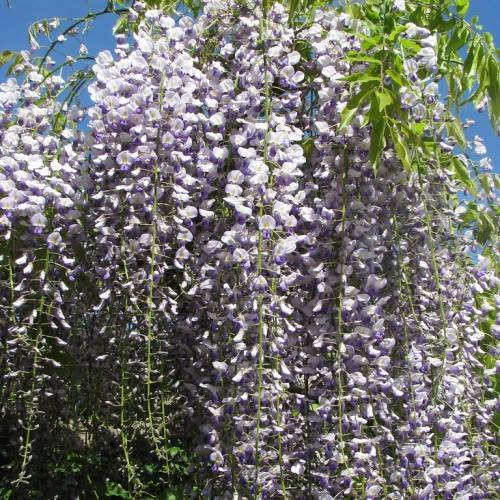
Japanese wisteria
Wisteria floribunda 'Multijuga'
Cycle:
Perennial
Watering:
Average
Hardiness Zone:
4 - 9
Flowers:
Flowers In Spring
Sun:
Full sun, Part sun/part shade
Soil:
Well-drained
Fruits:
Fruits In Autumn Ready In
Leaf:
Yes
Growth Rate:
High
Maintenance:
High
Poisonous To Pets:
Yes
Invasive:
Yes
watering
Japanese wisteria should be watered regularly and deeply. This will help to keep the plant healthy and ensure its growth. The best time to water this plant species is early in the morning, when temperatures are lower and the soil has had time to cool down overnight. Watering once or twice a week should suffice, however during hot and dry spells you may need to water more frequently. When watering, it is important to ensure that the soil is thoroughly saturated. This will help to ensure that the entire root system is being hydrated. It is also important to avoid over-watering, which can saturate the soil and create a favorable environment for pests and diseases.
sunlight
Japanese wisteria, also known as Wisteria floribunda 'Multijuga', prefers full sun exposure throughout the day, but can also tolerate light shade. An ideal spot will receive a minimum of 6 hours of direct sunlight each day. As for the timing, it's best to give Japanese wisteria the fullest dose of direct sunlight it can get in the morning and mid-afternoon, when the sun is highest in the sky. This will help promote the most vigorous growth for this plant species.
pruning
Japanese Wisteria should be pruned twice a year, when it is dormant during late winter and in mid-summer. In late winter, prune all side branches growing from main stems, cutting them back to 2 or 3 buds. This encourages long single flower clusters in the spring. During midsummer, shorten each main stem by 1-third to 1-half its length. This will help to create a bushy habit, and will encourage more lush flowering in the coming spring.
